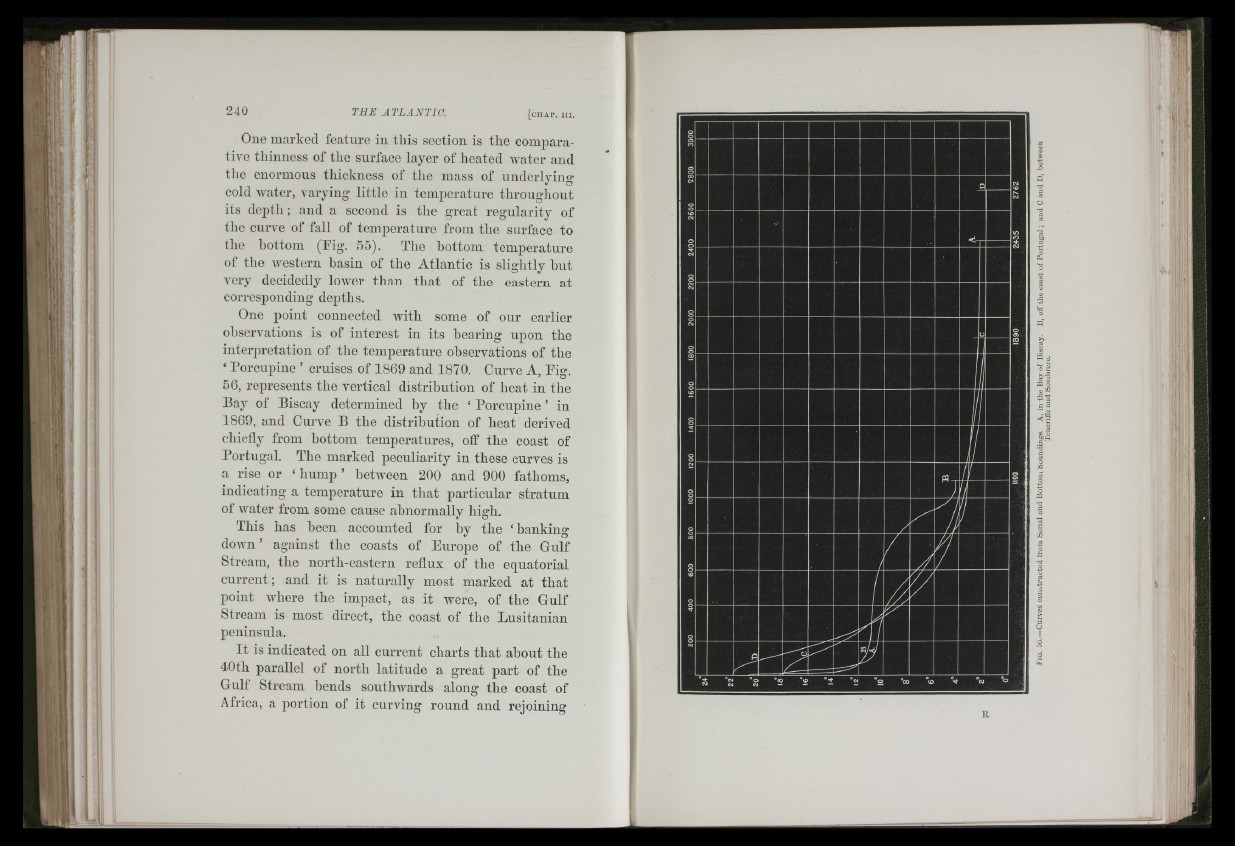
ff J A' '
4 .; :
iff
I’ff
iii I
iii
( ! l
Ì
Iff
One marked feature in this section is the comparative
thinness of the surface layer of heated Avater and
the enormous thickness of the mass of underlying
cold Avater, varying little in temperature througiiont
its depth ; and a second is the great regularity of
the curA'e of fall of temperature from the surface to
the bottom (Eig. 55). The hottom temperature
of the Avestern basin of the Atlantic is slightly hut
very decidedly loAver than that of the eastern at
corresponding depths.
One point connected Avith some of our earlier
ohserA'ations is of interest in its hearing upon the
interpretation of the temperature observations of the
‘ Porcupine ’ cruises of 1869 and 1870. Curve A, Eig.
56, represents the vertical distribution of heat in the
Pay of Biscay determined by the ‘ Porcupine ’ in
1869, and Curve B the distribution of heat derived
chiefly from hottom temperatures, off the coast of
Portugal. The marked peculiarity in these curves is
a rise or ‘ hump ’ hetAveen 200 and 900 fathoms,
indicating a temperature in that particular stratum
of Avater from some cause abnormally high.
This has heen accounted for by the ‘banking
doAvn’ against the coasts of Europe of the Gulf
Stream, the north-eastern reflux of the equatorial
current; and it is naturally most marked at that
point Avhere the impact, as it Avere, of the Gulf
Stream is most direct, the coast of the Lusitanian
peninsula.
It is indicated on all current charts that about the
40th parallel of north latitude a great part of the
Gulf Stream bends soutliAvards along the coast of
Africa, a portion of it curving round and rejoining K
' ii ! l
ff :1ir
I.. .4